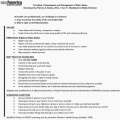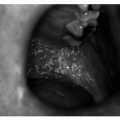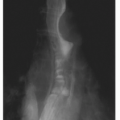CLINICAL PEARLS
Pain is not a normal part of aging.
Even in the cognitively impaired, any complaint of pain must be taken as real.
A patient’s report of pain is the most reliable gauge of effectiveness of therapy.
Many older adults are reluctant to report pain, but as the “fifth vital sign,” pain should be assessed at every encounter.
Older persons will often not use the specific word “pain” but readily describe symptoms of burning, ache, soreness, and stiffness or hurting.
The goal of chronic pain management is improved function and quality of life; the elimination of pain is usually not possible.
Pain scales can help track the effectiveness of management strategies over time and can be adapted to cognitive or sensory impairments.
The biopsychosocial context is important in understanding and managing painful conditions for both the patient and the provider.
Routine rather than as-needed dosing of medications for persistent pain results in better pain control.
A multidisciplinary approach using multiple modalities in addition to medications is usually needed to manage persistent pain.
Nociceptive pain is treated stepwise, progressing from nonopiate analgesics and nonsteroidal anti-inflammatory drugs (NSAIDs) to opiate analgesics.
Neuropathic pain frequently responds to antidepressants, anticonvulsants, and topical agents, but conventional agents are also needed.
Combination analgesic/narcotic medications are limited to the total daily dose of the nonnarcotic agent. All sources of prescribed and over-the-counter analgesics, especially acetaminophen, aspirin, and ibuprofen, must be considered.
When dosing analgesic medications, avoid the maximum recommended dose for long periods; titrate to the lowest effective dose by being cognizant of drug-drug, hepatic, and renal adjustments.
When prescribing prolonged use of an NSAID, consider the use of concomitant proton pump inhibitors or misoprostol to decrease the risk of gastric irritation.
When prescribing narcotic analgesics, anticipate constipation and nausea and institute prophylactic therapy as indicated.
Pain is an unpleasant sensory and emotional experience associated with actual or potential tissue damage. Management of pain is probably the most frequent reason for seeking health care. From one quarter to one half of the community-dwelling older population suffers important pain problems. At least as many, if not more, older adults have pain problems in the nursing home. Nearly 85% of older adults are affected by painful conditions and diseases associated with pain, including osteoarthritis, rheumatoid
arthritis, cancer, herpes zoster, temporal arteritis, polymyalgia rheumatica, and atherosclerotic disease. Other common conditions include low back disorders, gout, and headache. The incidence of persistent pain increases with age, affecting 34% of those aged 75 to 79 and 50% of those older than 95.
The physical effects of pain can result in loss of mobility, deconditioning, and restriction in function. This can lead to complicating painful conditions including falls, pressure sores, and incontinence. Pain can be a symptom of underlying inflammation or infection and contributes to delirium and worsening cognitive impairment.
The effects of pain are not just physical but also include emotional and psychosocial responses. Depression, fatigue, alteration of sleep or appetite, and social withdrawal are common responses to painful conditions. The perception of pain and response can be culturally mediated and altered by previous painful experiences or associated events.
Although pain in the elderly is generally accepted as common, the inadequate treatment of pain, unfortunately, is also common. In nursing homes, up to one fourth of those who report daily noncancer pain have no analgesic medications on order. Effective pain evaluation depends on understanding the underlying process contributing to pain, concomitant disease states, and the careful assessment of pain, including severity, associated symptoms, and its effect on function and quality of life. Management will often be multidisciplinary and include pharmacologic and nonpharmacologic approaches. The goal of pain management is not the elimination of pain but the restoration or improvement of function.
THE MECHANISM OF PAIN
Pain is a complex, subjective and unpleasant sensation derived from sensory stimuli and modified by memory, expectations, and emotions. The experience of pain involves transduction of noxious stimuli in sensory nerves to electric impulses. These impulses are then transmitted along thick, myelinated A-delta fibers and thin unmyelinated C-fibers to the dorsal horn of the spinal cord, thalamus, and cerebral cortex, areas responsible for the perception and discrimination of painful sensations. Modulation of pain, both inhibitory and excitatory, occurs along the peripheral nervous system and central nervous system (CNS) to respond and adapt to the stimulus. One component of this adaptive phenomenon is neuroplasticity. This is the capacity of neurons to change function, chemical profile, or structure, thereby altering their pain sensory function, and is an important feature of persistent pain.
Older people generally feel less acute pain in response to a specific injury compared to younger adults. This may be due to deterioration of the peripheral C-fibers. This does not mean that older people do not feel pain. Indeed, older persons are more likely to develop persistent pain because of an increased capacity for temporal summation and sensitization of nerves in the spinal cord. Following a painful stimulus, older persons will maintain a hyperexcitable state longer than younger persons; therefore repeated, separate stimuli will result in more pain. The function of endogenous opioids tends to decline in the elderly as well, reducing the natural capacity for pain relief.
PAIN CLASSIFICATION
Pain can be classified broadly as nociceptive or neuropathic (see
Table 5.1), and as acute or persistent. Inflammatory pain and functional pain can have predominant nociceptive or neuropathic components.
Nociceptive pain results from the activation of pain receptors by noxious stimuli. It may have a somatic or visceral component, which can help differentiate the location of the activated receptors. Somatic pain originates from deep tissue injury or cutaneous injury, is often easily localized, and is described as dull, achy, or gnawing. Conditions include fractures and muscle pulls. Deep somatic pain can be less easily localized. Visceral nociceptive pain results from injury to an organ, organ system, or supporting tissue (e.g., pleura or peritoneum). It is also described as diffuse, dull, achy, or gnawing. It is poorly localized and radiates from its location. Examples include bowel obstruction and tumor infiltration. In community-dwelling elderly, the prevalent types of pain are joint, leg, and back pain. Pain in joints, an old fracture site, and malignancy are more prevalent in nursing home elderly. Generally, nociceptive pain responds to analgesic medications.
Neuropathic pain results from damage to peripheral or secondary afferent neurons or damage at higher levels of the CNS, resulting in abnormal signal generation (ectopic
or spontaneous), propagation, or perception. It is often due to neural damage from surgery, radiation, and side effects of medications or disease processes (e.g., tumor infiltration, compression, and stroke). Common causes of neuropathic pain in the elderly include postherpetic neuralgia, diabetic neuropathy, and radiculopathy. The description of neuropathic pain commonly includes burning, tingling, or stabbing. Other common descriptions may include hot or cold sensation, raw or itchy skin, and dull aching pain. Medications are aimed at interfering with signal propagation.
Often, pain cannot be distinctly classified as nociceptive or neuropathic. Back pain, headache, and vascular pain may have features of both. Most persistent pain has both nociceptive and neuropathic symptoms.
Acute pain is generally associated with tissue damage, and the pathology is generally readily apparent. It is limited in duration and is not usually associated with long-term effects on the patient’s quality of life or with progressive disease. After a relatively limited healing period, which ranges from hours to days, the pain receptors involved return to a normal resting stimulus threshold. Examples include tissue injury from trauma or surgery. Treatment includes common analgesic medications.
Chronic or persistent pain exists after an acute process should have resolved or may be associated with no specific injury. Typically, pain lasting for >3 months is considered persistent. The
American Geriatrics Society Panel on Persistent Pain in Older Persons prefers the term
persistent to
chronic to help reduce the negative images associated with the latter term, such as treatment failure, malingering or long-standing psychiatric problems, or drug-seeking behavior. Persistent pain can be categorized as malignant or nonmalignant. Malignant persistent pain usually has a pathology and is indicative of a life-limiting disease such as cancer, end-stage organ dysfunction, or human immunodeficiency virus (HIV) infection. It may have both nociceptive and neuropathic elements and therefore responds to opioid, nonopioid, and adjuvant agents. Persistent pain may be present for months to years or can be sporadic. Often, there is no detectable pathology because the injured area in question is physically remote from the original area of stimulation.
EVALUATION OF PAIN
Many misconceptions lead to elderly persons underreporting pain to health care providers (see
Table 5.2). Consequently, significant pain complaints may be missed if not routinely asked about at each medical encounter. Older persons will often not use the specific word “pain” but will readily describe the discomfort, hurt, or ache that they have. The assessment of pain must include the type, severity, onset, location, and duration of pain and previous therapies.
Developing a common language to assess the patient’s pain is important in the initial evaluation and measurement of the success of various interventions. The severity of pain may vary over the course of the day, so asking about both the current intensity of pain and the worst pain over the last 24 hours is helpful. Rating the intensity of pain as mild, moderate, or severe is important, but using a numeric
scale (0 to 10 or 0 to 100 with “0” being no pain and “10 or 100” the worst pain in the patient’s life) may give a better range of pain assessment. Another instrument, the Functional Pain Scale rating, incorporates both severity and interference with daily activities. Zero relates to no pain or interference with daily activities; “1” relates to tolerable pain not interfering with activities; “2” to tolerable pain that interferes with some activities; “3” to intolerable pain but being able to use the phone, watch television, or read; “4” to intolerable pain and not being able to do the same activities that are possible with a rating of “3”; and “5” to intolerable pain and inability to communicate verbally.
Also, it is helpful for the patient to describe the quality of the pain (i.e., sharp, burning, or dull), duration (i.e., transient, intermittent, or persistent), and to identify the location and direction of radiation of pain (i.e., superficial or deep, localized or diffuse). Pain questionnaires such as the McGill Pain Inventory help prompt the patient to describe pain and are useful tools for monitoring improvement. The patient should be asked about aggravating and relieving factors. The present pain management regimen and previous treatments and their responses should be evaluated because they can significantly impact treatment options.
Although specific causes of pain should always be sought, many times pain in the elderly will not have a clear onset or single etiology. Some specific pain syndromes, such as trigeminal neuralgia, herpes zoster neuralgia, or temporal arteritis, present with classic features. However, many examples exist of atypical presentation of illness that in younger persons is typically painful (e.g., infection and myocardial infarction). Pain can also be secondary to a concomitant disease. Painful neuropathy from diabetes, peripheral vascular disease, and stroke should be considered. Pain therapy will be most successful in these situations by modifying the underlying disease, and pain may respond to more than just medication. Glucose control is the cornerstone in managing diabetic complications.
The objective signs of acute pain may include pallor, sweating, tachycardia, and facial grimacing. The patient who presents with persistent pain will likely not have these symptoms, and objective findings on examination can be a challenge. Unsuspected causes of pain can include dental or oral pathology, nocturnal leg cramp, and poststroke contractures. Physical examination should include careful evaluation of the location of pain and identification of common referral patterns. Palpation for trigger points and inflammation, and maneuvers to reproduce pain should be sought. The range of motion, as well as a complete neurologic examination, should be documented. The scope of the workup will depend on the patient’s prognosis, goal of care, and advance directives.
Laboratory testing options include hemoglobin level and hematocrit, fasting glucose level, and chemistry profile for liver and renal function. Evaluation of uric acid for gout pain and alkaline phosphatase for Paget disease or other bone involvement may be warranted. Radiologic examination should depend on suspected underlying processes (i.e., spine films for compression fracture or computed tomography scan/magnetic resonance imaging for spinal stenosis).
Finally, it is important to have a sense of the impact that pain has on the person’s life. Physical function and limitation need to be identified. Social supports and coping strategies must be assessed. Some patients may rely on their network of family and friends or find support through their spiritual life and religious or other civic organizations. In geriatric patients small improvements in physical function can have dramatic improvements in well-being. Improving independence through mobility and completion of activities of daily living or returning to enjoyable activities with improved extremity function can result from improved pain control.
The emotional and psychosocial impact of pain is important to acknowledge. If anxiety or depression are significant contributors or responses to the painful experience, coping strategies need to be prescribed. The inability to sleep because of pain can have a profound effect on daily activity; the success of pain control may simply be the ability to get a few hours of restful sleep. The response to pain may be fear, anxiety, anger, and loneliness.
Undermanaged pain can lead to depression, and depressed mood can make the perception of pain worse. However, patients may be diagnosed with a mood or thought disorder and treated with a psychotropic medication when the actual problem is unrecognized and untreated pain. The use of mild analgesics may reduce the use of psychotropic drugs.
Evaluation of Pain in the Cognitively Impaired
An estimated 45% to 80% of nursing home patients have some chronic pain. There is no reason to assume that those with cognitive impairment are any less able to feel pain. Self-report should not be used as a sole means of pain assessment. Although the patients may be unable to speak of their pain, decreased appetite, increased irritability, poor sleep, and agitated behaviors may be symptoms of pain. Other nonspecific signs may include grimacing, teeth grinding, sighing, groaning, breathing heavily, or resistance to care. Assessments by family or caregivers will certainly help in evaluating the effectiveness of pain management strategies. The family should be asked about how the older person has manifested pain or discomfort in the past. The use of a visual scale of happy to tearful faces can be used to help speech-impaired persons to rate their pain. Simple, directed yes-no questions are also helpful.


 Get Clinical Tree app for offline access
Get Clinical Tree app for offline access




